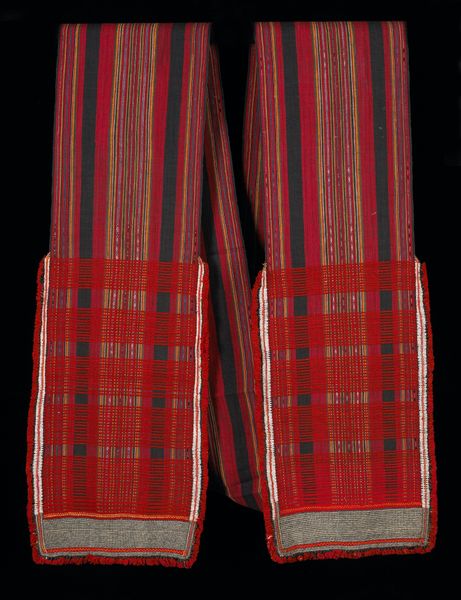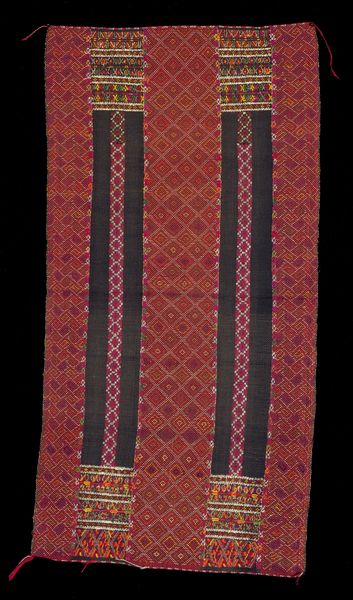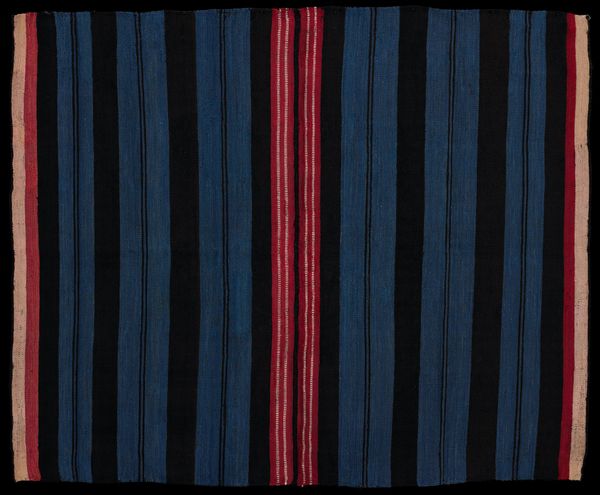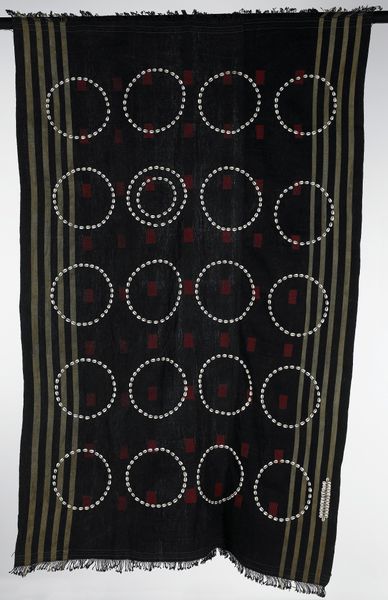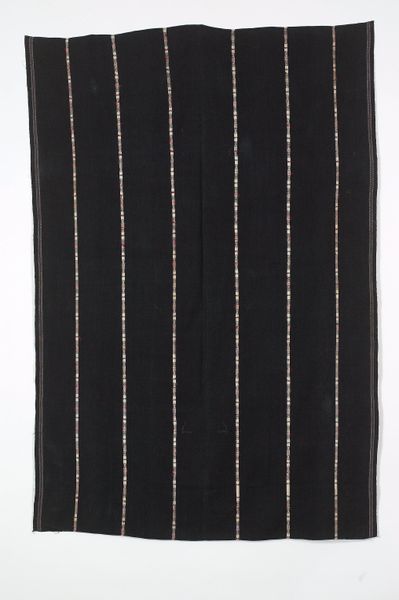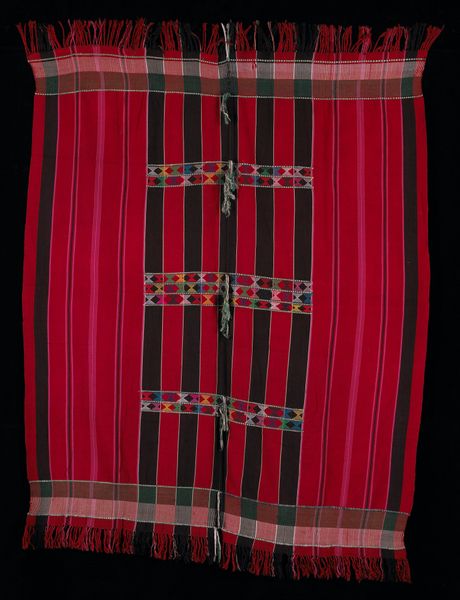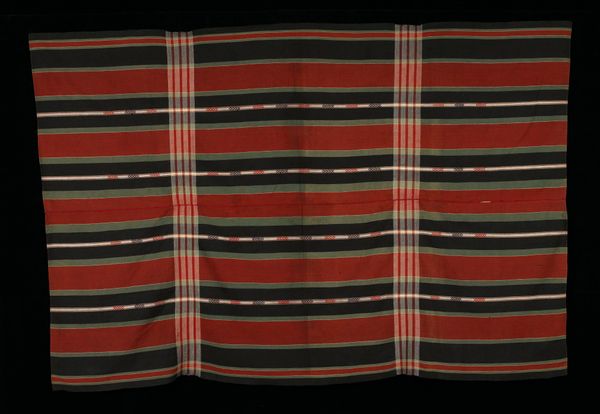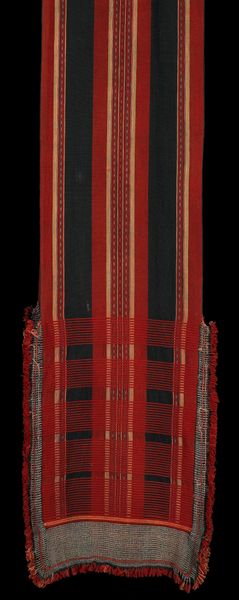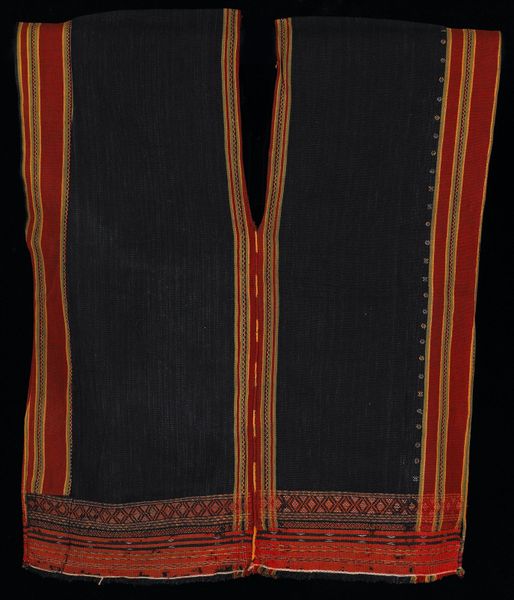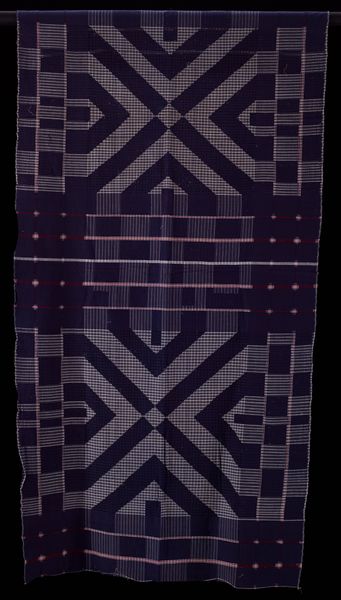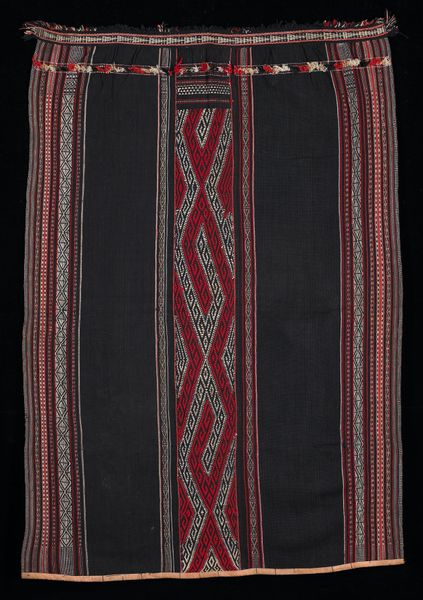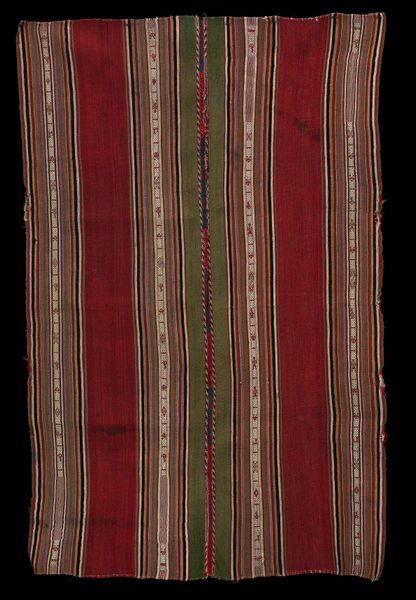
fibre-art, weaving, textile, cotton
#
fibre-art
#
weaving
#
textile
#
geometric
#
cotton
Dimensions: 184 3/8 x 11 1/2 in. (468.31 x 29.21 cm) (without fringe)
Copyright: Public Domain
Curator: Here we have a Man's Loincloth, likely created in the 20th century by an anonymous artist from the Indigenous Americas. The piece is woven from cotton and falls under the category of textile and fiber art. Editor: It’s strikingly bold, isn't it? The strong verticals of red and black evoke a somber mood. Yet the patterns feel almost rhythmic. Curator: Indeed. The bold color contrast immediately draws the eye. Loincloths, beyond their practical purpose, are often laden with cultural significance. Their patterns and colors can denote status, tribal affiliation, or even ritualistic roles. Editor: And who decides what makes it “men’s” as opposed to… everyone’s? Textiles such as these play key roles in the expression of gender. And what societal power structures informed these textile designs? The vibrant lines create such arresting geometric forms. Curator: Those are valuable points. The construction of gender roles is a very relevant approach, and these issues have significantly altered curatorial directions, compelling museums to respond accordingly, incorporating these concerns and shifting the power dynamic. The piece may also embody pattern and decoration, disrupting historical hierarchies that separate art from craft. Editor: I agree. I think of how these materials participate in a long history of class struggle. The rigid order of the stripes reminds me of urban planning too; power always finds expression, visually. Do we know anything about where this was produced, specifically? Curator: Unfortunately, its provenance is incomplete, known only as "Indigenous Americas". However, museums have increased efforts in provenance research, which sheds light on an object's historical trajectory, which influences the very politics of display and the cultural understanding that informs what makes a museum "authoritative." Editor: Absolutely. Thank you for outlining all of that for us! The story behind an object is sometimes as fascinating and complex as its physical presence. Curator: Precisely. Every piece has a complex narrative, shaped by its creation, use, and the circumstances of its journey into the museum collection. I wonder what its intended function was, whether this loincloth functioned solely as attire, or a deeper socio-political purpose was at play. Editor: Thinking about those interwoven narratives—the maker, the wearer, the colonial context of "collection"... it's quite sobering, in a way. Curator: A beautiful reminder that a single artifact can unravel so much more.
Comments
No comments
Be the first to comment and join the conversation on the ultimate creative platform.
